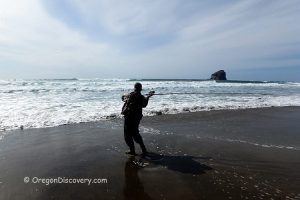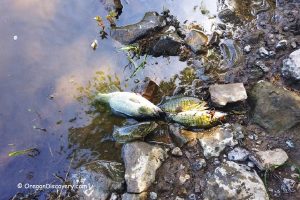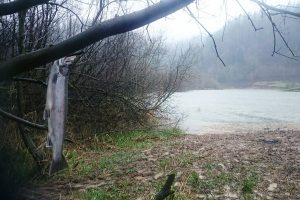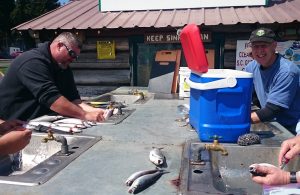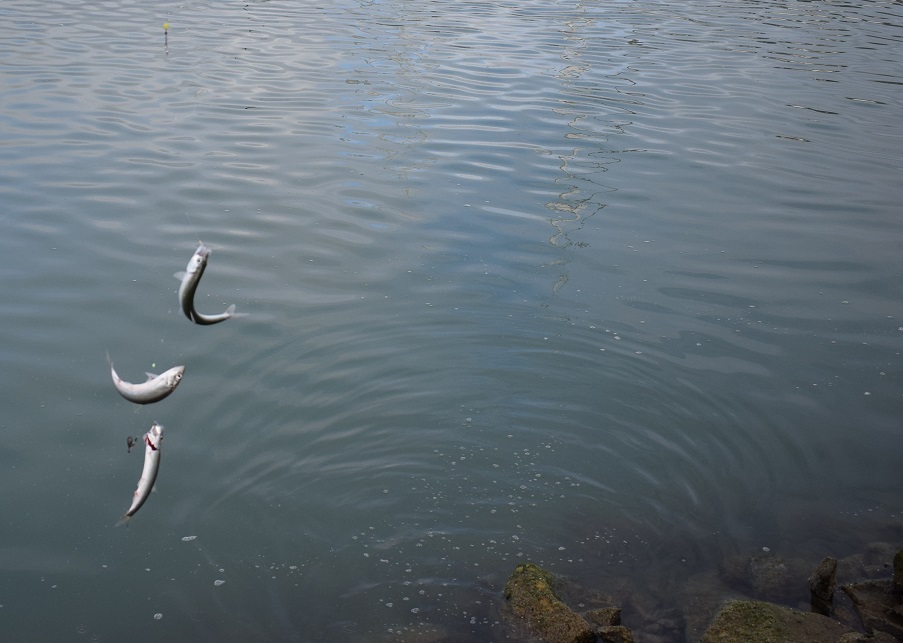
A coastal schooling species, Pacific herring is an important component in a food chain of North Pacific, playing a crucial role in the ecological balance of North Pacific. Obviously, Pacific herring is important to the survival of other species such as sea mammals, fish, and seabirds.
Fishing of Pacific herring is strictly controlled because its numbers are dramatically reduced from the mid 20th century. The Herring grows to 9-18 inches and live from 10 to 19 years. Related to the Pacific sardine and the American shad, Pacific herring ranges from the Bering Straits to the North Coast of California.
Spawning Period
Pacific herring gather into large schools near the spawning area. Females release eggs and attach them to objects under the water. Meanwhile, males discharge their milt into the water to fertilize the eggs. These should hatch after two weeks and it is important to note that the Herring spawn in almost all of Oregon’s bays. The spawning season for Pacific herring is in February to April with the most action happening in March.
The herring may also spawn in other parts such as the kelp forest and any shallow areas along the coast in February to the end of March. The transparent larvae are at this point an attractive food for predators and few will survive the tides and currents. Those that make it to 3 months eventually change into the adult form and coloration.
Video
While the spawning season is the best time to jig for herring, they will also be seen in many of Oregon’s bays during the year. This is a type of forage fish, whose population in Oregon’s bays is determined by the ocean currents and tides. If spawning activities begin, numbers of sea lions, gulls, loons, and cormorants can be seen hunting for this fish.
Catching Techniques
You do not need any bait, only herring jigs. This refers to a jig with multiple (5-6) small jigs (tiny hooks dressed in colored plastic or feathers) that are attached to a leader. The fishing gear should comprise a lightweight spinning tackle and 10-15 pounds test monofilament for the main line.
To prevent the jigs from tangling as they are moved up and down, your sinker must be of the right weight (depends on currents). Throw the rig as far as you can and reel it back slowly twitching. Rather than landing the first herring hooked, use it to attract more fish to your jigs attached. If you lucky, you will get from 2 to 6 fish on your line.
Being so easy to catch during the spawning season, herring are a popular opportunity for beginners to gain a positive fishing experience.
Where to Catch Pacific Herring
The Herring prefer to nestle in places with protected water, near considerably deep channels. The ideal spawning location has rocks, eelgrass, kelp, and seaweed to hold the eggs in place. The best places to catch herring in Oregon are therefore Tillamook Bay, Coos Bay, Umpqua and Yaquina Bays among others.
Video
Regulations for Catching Pacific Herring in Oregon
With few exceptions, anyone above 14 years must have an angling license to take fish for personal use.
There are limits to how much herring you can take from Oregon’s bays. Pacific herring is included in the "baitfish" group of herring, sardine, anchovy, and smelt with a daily limit of the 25 pounds. This rule is specially designed to preserve fish populations and even then, anglers are strongly advised to take only what they need in order to protect the environment.
How to Use Pacific Herring?
Anglers love using herring as bait for Pacific salmon, fresh or frozen in a salt brine solution.
However, rich in protein, iodine, omega-3, and omega-6 fatty acids, Pacific herring is delicious to eat and may be grilled, baked, fried, smoked, or preserved by pickling.
You May Also Like


